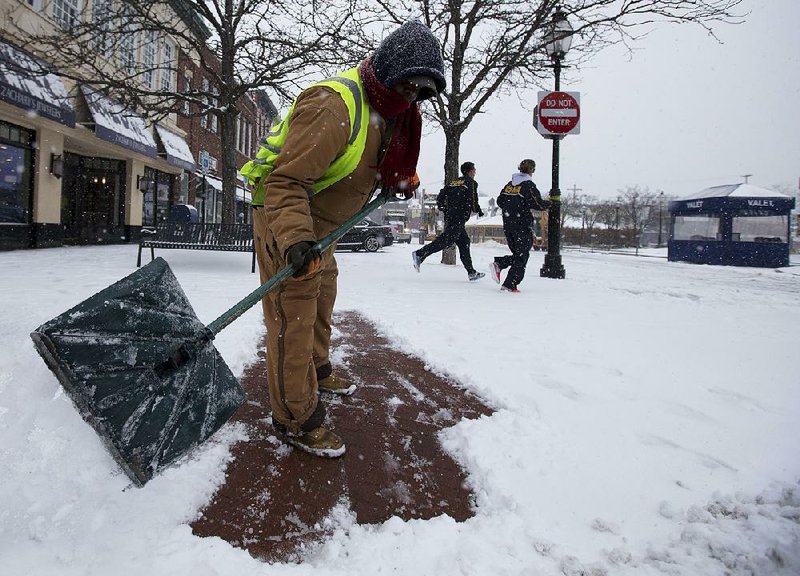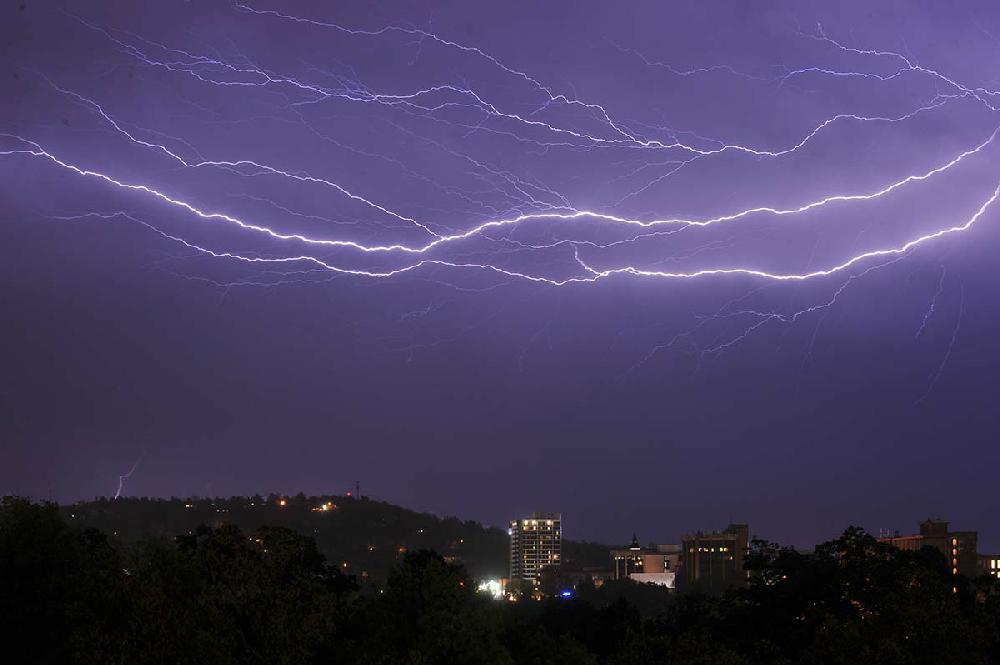WASHINGTON - Winter kept its icy hold on much of the country Monday, with snow falling and temperatures dropping as schools and offices closed and people from the South and Mid-Atlantic to the Northeast waited out another storm indoors.
With accumulations of 4 to 6 inches of snow in Washington, the area settled into a familiar routine of hunkering down.
Schools and government offices were closed. Federal workers stayed home. Young adults gathered on the sloppy, slushy National Mall for a semiorganized, afternoon snowball fight.
By early afternoon, the snow had stopped. But the region will face yet another challenge: another blast of bitterly cold arctic air. Temperatures were expected to dip into the single digits along the Eastern Seaboard on Monday night. That doesn’t usually happen after March 1, which is sometimes referred to as the start of “meteorological spring.”
If the forecast holds, it would be only the third single-digit day after March 1 in the recorded history of the nation’s capital - and the previous two were in 1872 and 1873, according to the National Weather Service.
Records were in danger elsewhere, too. In New Jersey, nearly 6 inches fell in some areas, which could make it the eighth-snowiest winter in the past 120 years.
“It’s one of the more disruptive winters of the last several decades,” New Jersey climatologist David Robinson said.
More than 2,800 flights inthe United States were canceled as of Monday afternoon, according to flight-tracking site FlightAware.com. The bulk of the problems were at airports in Washington, New York and Philadelphia.
In Texas, hundreds of flights were canceled, officials called for energy conservation measures, and interstates were turned into parking lots extending for miles.
North Texas took the brunt of the latest storm. Traffic on Interstate 45 south of Dallas on Sunday nightand into Monday was at a virtual standstill for hours as accidents and tractor-trailers unable to climb steep grades blocked other vehicles.
On Virginia’s roads, state police troopers had responded to more than 800 traffic crashes across the state by 3 p.m. Monday. Police reported one fatal weather-related crash southeast of Richmond. The storm dropped several inches of snow on the Richmond area.
Governors declared states of emergency in Virginia and Tennessee, where there were hundreds of traffic crashes and tens of thousands of power failures.
Parts of west Tennessee have received 2 to 3 inches of precipitation since Sunday, including sleet, freezing rain and snow, meteorologists said. At Memphis International Airport, the mixed precipitation total was about 1 inch. Sections of Shelby County, which includes Memphis, were still getting snow flurries Monday afternoon.
The freezing rain and ice across the state downed trees and power lines and left more than 61,000 customers without power at one point Monday. About 19,000 customers in the Memphis area were without power Monday afternoon, down from about 30,000 earlier in the day, according to Memphis Gas Light & Water.
The Tennessee Highway Patrol reported 306 weather-related crashes from Sunday through Monday morning that left three people dead.
“There have been widespread accidents all across the state,” Dean Flener, a spokesman for the Tennessee Emergency Management Agency, said Monday. He urged people to stay inside.
Forecasters expect road conditions to remain slick and dangerous because temperatures were not expected to get above freezing anywhere in the state Monday.
In Washington, federal workers are familiar with the routine that comes with winter storms. Monday was the fourth time this winter that the government has shutdown because of weather.
The roads in the capital were messy but passable, and the snow had stopped by early afternoon. The worst conditions came during what would have been morning rush hour, but traffic was allbut nonexistent. Commuter trains were canceled, Amtrak was on a limited schedule, and though the Metro subway system stayed open, the large parking garage at the Springfield, Va., station was nearly empty.
Jim Lee, meteorologist in charge at the National Weather Service in Sterling, Va., noted that every decade in Washington, there are only six days with more than 6 inches of snow.
“We’ve had pretty close to two of them this year already - and winter’s not over,” Lee said.
With the government shut down, tourists were seeking out whatever activities they could find.
In the morning, the Supreme Court heard oral arguments inside a chamber packed with out-of-town visitors and legal wonks. By noon, crowds were growing at the National Air and Space Museum, the only Smithsonian Institution attraction that was open Monday. Among them were Russ Watters, 60, of St. Louis, and his 14-year-old son, Seth, who was touring Washington with his eighth-grade class.
“We’re trying to find stuff that’s open, so this is open,” Watters said. The group planned to stay on its bus and get drive-by lessons on the city’s monuments in the afternoon.
In suburban Falls Church, Va., dozens of preteen daredevils went sledding and snowboarding down a steep hill behind an elementary school. But Maya Luera, 11, was unhappy that the snow day would force the school system to tack another day onto the end of the year.
“I’m more of a summer person, so I’d rather have more free time in the summer than the winter,” she said.
Meanwhile, a Philadelphia television news reporter covering the aftermath of the storm in New Jersey was blasted with a wall of snow from a plow while reporting live from the side of a road in Woodstown.
WTXF-TV posted a video showing that reporter Steve Keeley never lost his footing. The station said it’s the 15th storm Keeley has reported on this winter and that he “didn’t even miss a beat.” Information for this article was contributed by Ben Nuckols, Brett Zongker, Matthew Barakat,Adrian Sainz, Sheila Burke, Geoff Mulvihill, Steve McMillan, Adrian Sainz Sheila Burke and staff members of The Associated Press.
Front Section, Pages 1 on 03/04/2014

